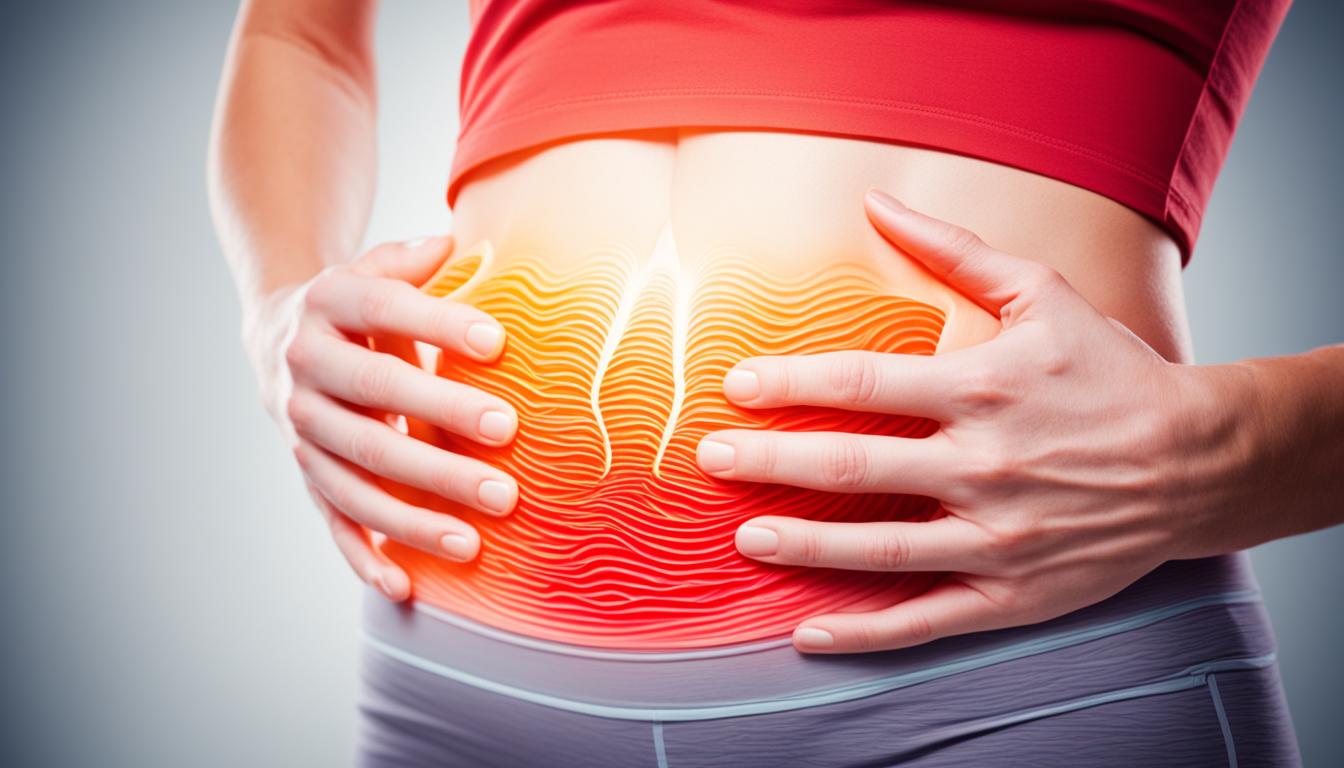Menstrual cramps, also called period pains, affect many women during their monthly cycles. Some cramps signal a normal process, but severe pain could mean something more. This could be due to a condition named endometriosis. It causes intense pelvic pain and may lower a woman’s quality of life.
Endometriosis happens when tissue similar to the lining of the uterus grows outside it. This issue comes in many forms. For example, some women have the tissue on nearby organs, while others might have cysts filled with old blood. The effects also vary, with different symptoms and effects on fertility, depending on the stage.
The signs of endometriosis are not the same for everyone. But they often include intense period pain and heavy bleeding. Pain during sex, bloating, and tummy or bowel discomfort are also common. The illness’s exact cause remains a mystery. However, experts believe menstrual blood flowing backward, genetic changes, and immune system issues could contribute.
There are factors that raise the risk of getting endometriosis. These include a family history of the disease, starting periods early, and having short menstrual cycles. Certain bodily characteristics and health issues, like being very thin, can also play a part.
Unfortunately, there’s no surefire cure for endometriosis yet. But making healthy lifestyle choices can lessen its impact. This includes staying active, eating well, and steering clear of smoking. Abuse of alcohol or drugs, and substances like caffeine, might also worsen symptoms.
Our next sections will explore how stem cells from menstrual blood might help with endometriosis. We’ll also cover more on its prevention and treatment. So, stay with us for these important insights.
Key Takeaways:
- Menstrual cramps may indicate endometriosis, which involves tissue growing outside the uterus.
- Endometriosis has various types and stages, each with different symptoms and fertility implications.
- Its common signs include painful periods, heavy bleeding, ongoing pelvic discomfort, and issues with digestion.
- Factors that might increase the chance of getting endometriosis include a family history and certain lifestyle factors.
- Adopting a lifestyle aimed at reducing inflammation, like regular exercise and a good diet, can help manage its symptoms.
Menstrual Blood-Derived Stem Cells and Endometriosis: Pathogenesis and Early Diagnosis
Menstrual blood-derived stem cells (MenSC) are key in the start of endometriosis. This is a condition where tissue similar to the uterine lining grows outside the uterus. The stem cell theory says MenSC play a big role in creating and keeping these unwanted tissue growths.
Studies show MenSC are different in women with endometriosis than in healthy women. These differences could help early diagnosis. They might also lead to treatments designed specifically for each patient. This knowledge could help experts find and treat endometriosis sooner, helping women avoid severe symptoms.
There’s hope in using MenSC for endometriosis treatment. But, we need more studies and clinical tests to be sure they work and are safe. Research is ongoing to learn just how effective MenSC can be as a treatment for endometriosis.
Endometriosis: Impact, Prevention, and Treatment
Endometriosis affects about 10% of women during their reproductive years. It happens when endometrial tissue grows outside the uterus. This can cause a lot of discomfort and various symptoms.
Endometriosis brings more than just physical pain. It often lowers a woman’s quality of life. The chronic pain and symptoms greatly affect her daily life and feelings. It can also make it harder to get pregnant.
Depression and anxiety are common with this disease. This is because it’s complex and affects many parts of life. Endometriosis makes getting pregnant a challenge and can harm a woman’s mental health.
Unfortunately, we can’t prevent endometriosis. But, we have ways to manage its symptoms. The goal of treatment is to control the pain and make life better.
Drugs like ibuprofen help with pain and inflammation. Hormonal drugs might be used to manage the menstrual cycle. In severe cases, surgery to remove abnormal tissue might be needed. For those looking to get pregnant, fertility treatments like IVF could be an option.
But, many places face challenges in diagnosing and treating endometriosis early. This is especially true in low- and middle-income countries. We need to do more to make sure women everywhere get the right care at the right time.
In the end, endometriosis is a big deal for many women and girls. It affects their bodies, ability to have children, and how they feel. While we can’t stop it, there are ways to treat it and improve life. Everyone should know about it and have access to good care. This can help those with endometriosis lead better lives.
Conclusion
Menstrual cramps are often linked to endometriosis. They can really affect a woman’s life. The pain can be so strong that it stops her from doing normal things.
Although we can’t prevent endometriosis, getting diagnosed early and treated well can help. It is key for women to know its signs. This makes it possible to start treating it as soon as possible.
Endometriosis can be managed with various treatments. This includes medicines, hormone therapy, help with fertility, and sometimes surgery. Each plan is made to fit the person’s specific needs. The goal is to lessen pain, help with having kids, and make life better.
Making people aware of endometriosis is very important. This can help find it early and make sure it is treated well. Talking about it helps others understand and support those living with the condition.
We need more research to deal with endometriosis better. This includes studying stem cells from period blood. The goal is to come up with better and easier treatments.

